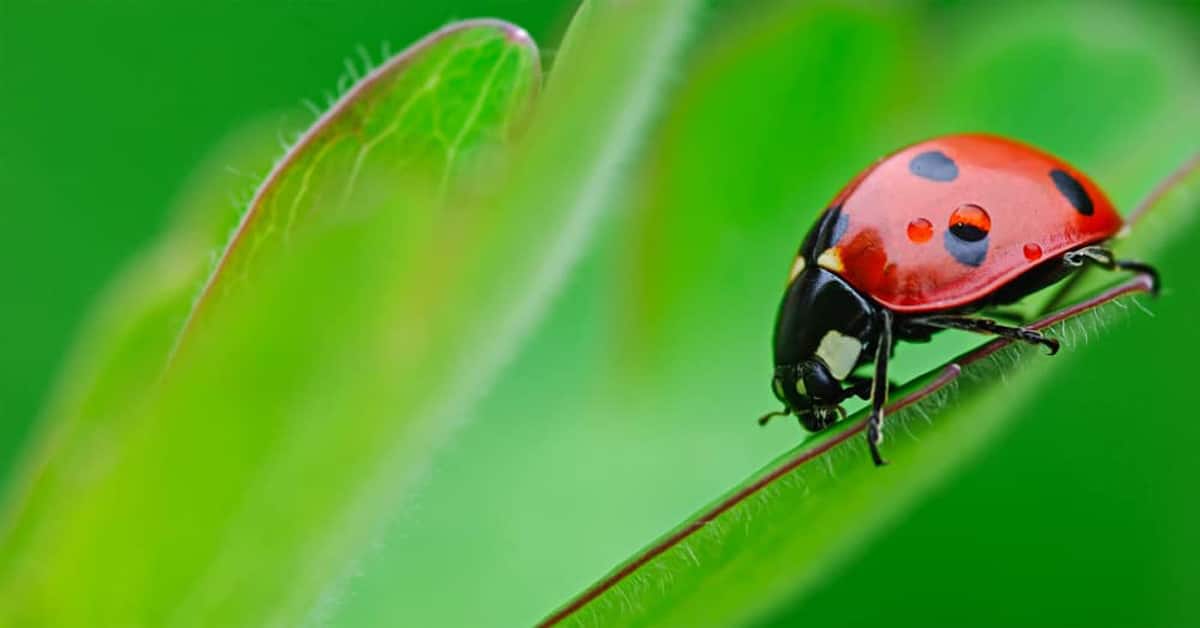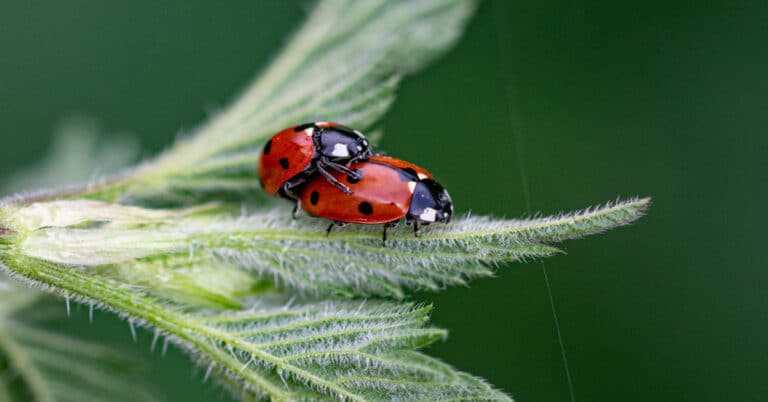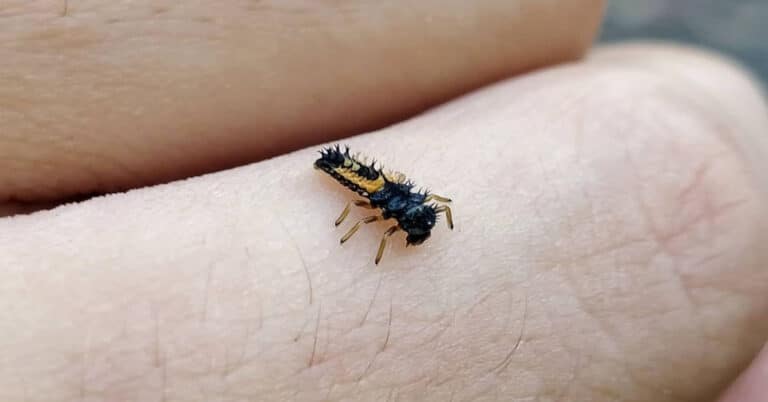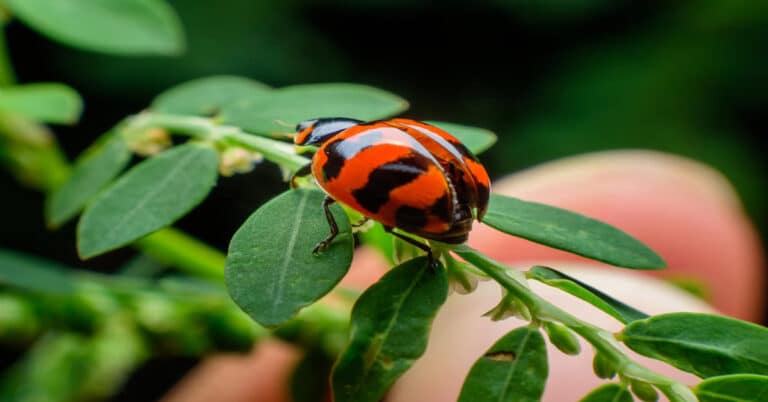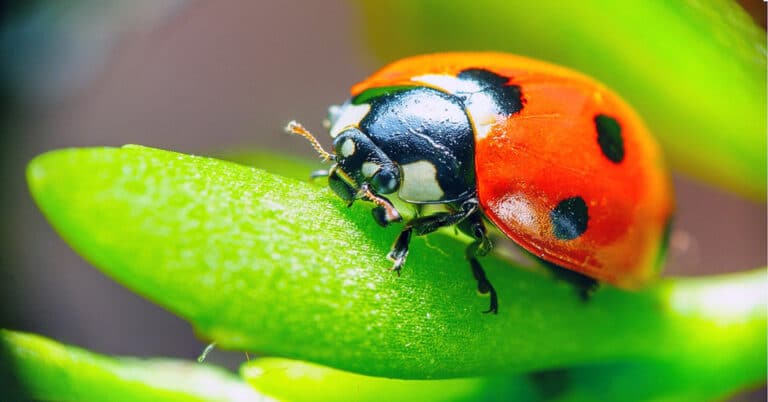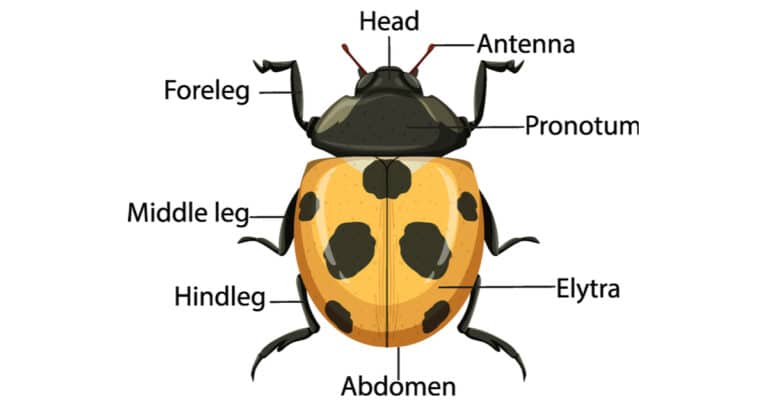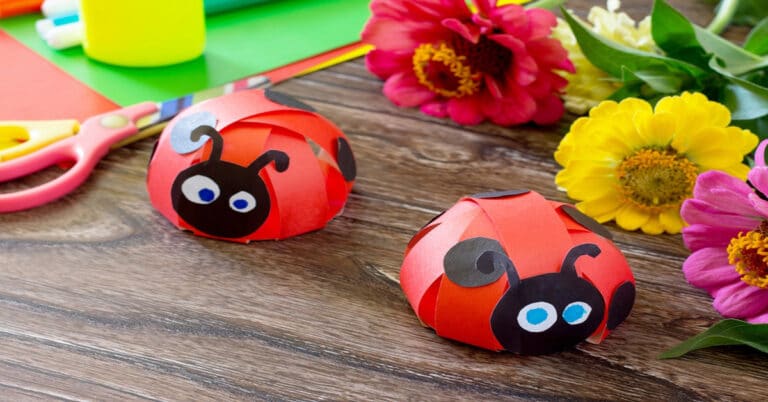The Ladybug – Everything You Need To Know
Whether you love them or hate them, you will find plenty of information about ladybugs. Explore 15 ladybug topics with over 100 pages packed full of ladybug information. Our ladybug pages contain articles written by “The Ladybug Lady” Lori Beth Robinson as well as containing ladybug links to sites all over the web for EVEN MORE information on ladybugs!
Get involved: Check out all the fun ladybug activities and coloring pages. Read fun facts to amaze your friends or learn about ladybug biology. All information is updated frequently!
A ladybug is a creature that everyone adores and loves. These brightly colored insects are respected in every culture. On the other hand, they aren’t bugs at all. They are members of the Coleoptera order, which comprises all of the beetles, and in many cultures, they are considered to bring good luck.
Considering that these small creatures are so adorable, people love to use their colors in art. That’s why you can see ladybug pictures, paintings, and ladybug clip art everywhere. They are one of our favorite “cool” bugs. They have not only a nice look but interesting habits, as well.
Have you ever wondered why a ladybug gets its name? Or why are the majority of ladybugs red, while some are yellow? In this article, we’ll address all of your ladybug questions and more.
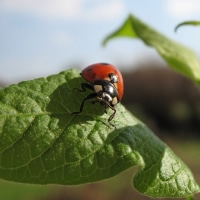
The Truth About Ladybugs
Surprisingly, ladybugs aren’t bugs, but beetles. So do not trust the “bug” part of its name. Actually, true bugs are part of the order of Hemiptera. For example, bedbugs and cicadas are part of this group, but ladybugs belong to Coleoptera, which is the beetle order, so don’t be surprised if you hear the name “ladybeetle” instead of “ladybug.”
Bugs have needle-like mouthparts and a mostly liquid diet, while beetles can chew and enjoy munching on plants and insects. According to National Geographic, there are about 5,000 species of these tiny insects, and most of them are quite beneficial. Ladybugs come in a variety of colors and “designs”. You might even see one with stripes or no markings at all.
Why are they called “ladybugs”?
Why do we call ladybugs “ladies” although they are both male and female? Interestingly, the name “ladybug” is associated with the Virgin Mary; The story is that farmers’ crops were being damaged by insects.
They prayed to the Virgin Mary when pests began to eat their crops, and farmers named ladybugs “beetles of Our Lady” after they arrived and cleared away the invading insects. This was later abbreviated to “lady beetle” and “ladybug.”
There’s another interesting version of its name’s origin. Like the first one, according to this version, they are said to be named for the Virgin Mary, as well, but the reason for this is the seven-spot ladybug, which is one of the most common European ladybugs. Its seven spots were thought to represent the Virgin Mary’s seven sorrows.
Appearance
The size of ladybugs varies depending on species, but most ladybugs are between 1 and 10 millimeters in length. Although most people think of ladybugs as being red with black spots, this is not the case for all species. In addition to red, many unusual ladybugs will catch your attention. They can be yellow, orange, brown, pink, or even all black.
They come in nearly every color of the rainbow, depending on the ladybug types. Often in contrasting pairs. However, some are as simple as black and white, while others are more exotic, such as dark blue and orange. Others have a striped pattern, while others have a checked pattern.
Ladybug Anatomy
An adult ladybug anatomy is similar to that of other beetles. Their forewings are protected by an outer shell, or elytra, which has a characteristic smooth dome form. A pair of narrow hind wings, which unfold in 0.1 seconds and are substantially larger than the ladybug’s body, is hidden beneath the outer shell.
At first glance, you might think that they can’t fly, but their beautiful hidden wings are there to help them!
Why Do Ladybugs Have Spots?
There are many superstitions about ladybugs, and we assure you that spots on a ladybug’s back have nothing to do with its age, fun as it may be to count them. In some cases, though, you can determine the ladybug’s species by taking note of the number and position of those markings.
Well, what we perceive as beautiful in ladybugs can be dangerous to other animals, especially ones that threaten them. Spots and bright colors are more than just for looks. Ladybug markings vary from species to species, but all ladybug types serve the same purpose: a defense system, a warning to potential predators.
The Defense System Of Ladybugs
By taking a look at ladybugs pictures, we can certainly say that they are beautiful and colorful creatures that most people love. We make fun ladybug crafts and love to get some ladybug coloring pages for our kids. But the bright colors and dots of this beautiful creature are a warning sign for other predators like frogs, birds, and other small mammals that might eat them.
A ladybug’s appearance isn’t the only thing a ladybug uses to protect itself, they secrete an oily, foul-smelling liquid when threatened, which further deters predators from capturing them. And if it doesn’t work, then they have a hack as their last chance to live.
To avoid being eaten, they pretend to be dead. When all else fails, ladybugs simply play dead, giving them a third defense mechanism.
Are Ladybugs Poisonous?
In most cases, these beautiful creatures aren’t harmful to humans. If you handle and disturb a beetle, not surprisingly, it may bite, which is mostly not dangerous but can cause inhalant allergies in some people. Some people are also sensitive or allergic to the blood that lady beetles secrete, which can cause contact dermatitis and a stinging sensation.
It’s rare but possible that a ladybug will bite you in self-defense, but don’t be scared. They carry no diseases, and unless you’re allergic, a bite will feel like a small pinch at worst.
Even though ladybugs are safe in large numbers, they’re recognized as persistent pests, and they can become a nuisance if they breach the windows and walls of your home. Ladybug home infestations can go wrong, and you might need to get rid of them.
How to get rid of ladybugs? Seal any cracks or holes in your home or company. They should be vacuumed up. Call the pest control professionals if you need help getting away from ladybugs or determining how they got in.
Ladybug Reproduction
How do ladybugs reproduce? Interestingly, they reproduce sexually. Ladybugs release pheromones to attract mates during mating season. Female ladybugs may wait several months after fertilization before depositing eggs.
And guess what? A single female ladybug can lay hundreds of eggs at once. Ladybugs lay their eggs on the underside of leaves in clusters or rows, commonly where aphids have gathered. Astonishing, isn’t it? Well, that’s the truth about ladybug reproduction.
Ladybug Life Cycle
Speaking of the ladybug life cycle, these insects go through four life cycle stages: the first one is the egg, then larvae, pupae, and finally, the adult ladybug stage. Some more interesting ladybug facts are that a single female can lay hundreds of eggs at once and that they grow faster in warm environments where food is easily affordable.
As already mentioned, ladybug eggs are laid on trees near their food sources, and that’s how the ladybug lifecycle starts. They hatch as larvae in four to 10 days and then spend about three weeks feeding up the earliest arrivals, which may eat some of the eggs that have not yet hatched. They’ll start building a pupa once they’re well-fed, and after seven to ten days, they’ll emerge as adults. They live for roughly a year on average.
What Do Ladybugs Eat?
Why are ladybugs considered beneficial? They’ve earned this place based on their diet of plant-damaging insects, most notably aphids. Ladybugs are carnivorous and primarily prey on aphids. Some species also feed on scale insects, mealybugs, spider mites, and other pests that threaten gardens or fields.
Ladybugs spend most of their time flying about the plant life that aphids feed on, discovering aphids. They are also temperature-sensitive, so when they’re not hunting, they look for warm, sun-reflecting surfaces to congregate on.
They always have a plan B, and that’s what makes them intelligent creatures. Ladybugs plan for supply shortages, and when food is scarce, ladybugs lay infertile eggs to provide food for their offspring.
Superstitions About Ladybugs
Ladybugs are associated with good fortune, real love, innocence, the need to make the correct decisions in life, joyful resolutions, and so on. So, what does seeing a ladybug imply? When you come across the ladybug spirit animal, you may be certain that wonderful changes are on the way.
In some cultures, it is said that they can tell what the weather will be like. There are even songs and poems about them with the same meaning. Some superstitions even say that if you are ill when a ladybug lands on you, it takes the illness away! You can wear a ladybug amulet to gain the same good luck.
So believe it or not, next time you meet this amazing creature, just stay positive and, at the end of the day, you won’t regret it!
Benefits of Ladybugs
Like many insects, they are beneficial because of their diet “plan”. Many attempts to utilize ladybugs to control pestilent aphids and other insects have been made since ladybugs have long been known to eat the gardener’s pestilent aphids and other insects.
The ladybug species, the Asian ladybug, is native to eastern Asia and was artificially released in the United States years ago. The reason is simple: to help control pecan aphids and protect farms from spoiling. Many scientists believe, however, that the releases were not successful, but the results prove them wrong.
Ladybugs are helping gardeners and farmers save their gardens and fields. They are glad to have them and consider them one of the many beneficial insects. The Asian lady beetles feed on aphids and other soft-bodied insects that damage plants and crops, and they do a great job.
Negative Effects of Ladybugs
Ladybugs don’t like cold weather and they love light. They seek cover beneath the bark, under leaves, and in other protective areas when the days become shorter and the temperatures drop. Thousands of ladybugs may congregate in one spot to take advantage of the colony’s collective warmth.
They aren’t beneficial all the time; sometimes ladybugs are very annoying for people since ladybug home infestations are a big problem. The Asian ladybug has earned a reputation as a home invader. These beetles move indoors for the winter because of the cold weather.
Other negative impacts are also connected with them. For example, the ladybug prepares for its winter dormancy phase by eating fruit, particularly ripe grapes, in late summer. The ladybug gets picked with the crop since it blends in with the fruit, and if the winemakers don’t get rid of the ladybugs, the “knee bleed” will taint the vintage. This is a big problem since it spoils the wine.
Where to Find Ladybugs
If you’re looking for a ladybird beetle, we have all the details about where to find the ladybug species with these ladybug facts here and in more ladybug articles on our website. Ladybugs are found almost everywhere on the planet, with the exception of the north and south poles and cold climates.
Despite their bad sides, ladybugs are still loved by many of us. They always succeed in making us smile when we get lucky and meet one while walking in the park. But if you want to get closer to this beautiful creature, then you must know where to look for it.
Ladybugs thrive in a variety of environments, including forests, cities, suburbs, and riverbanks. From spring until fall, ladybugs are most active. When the weather turns cold, they seek out a warm, isolated location to hibernate. Interestingly, thousands of ladybugs can be found in these hibernation colonies.
Final Words
Ladybugs are another incredible creation of nature. They are beautiful, colorful, and we consider them lucky. But out of this, there is much more to know about them. Their various habits make them special, including their 3-layered defense system that helps these small creatures live in a world full of predators. It is nothing more than a piece of art.
These beautiful creatures make us smile and help us stay positive. Even though the “good luck” thing is just a superstition, we tend to think that it could be true, and that’s enough to be happy sometimes. So next time this cutie lands on you, be careful not to hurt it accidentally.

Why do they come into my home?
Find More Answers.

Having discovered a fondness for insects while pursuing her degree in Biology, Randi Jones was quite bugged to know that people usually dismissed these little creatures as “creepy-crawlies”.

